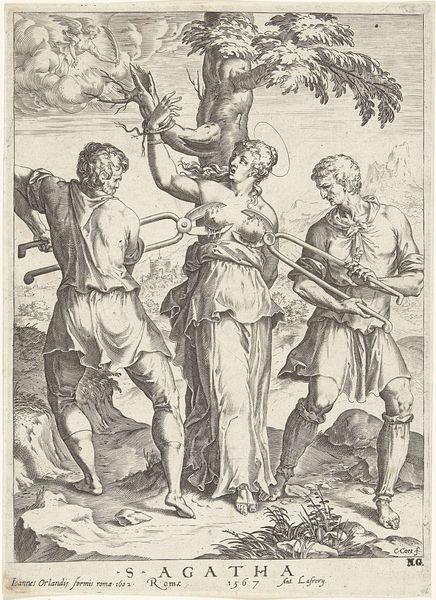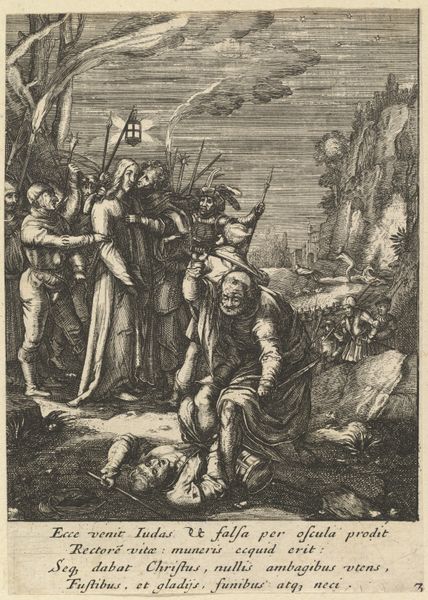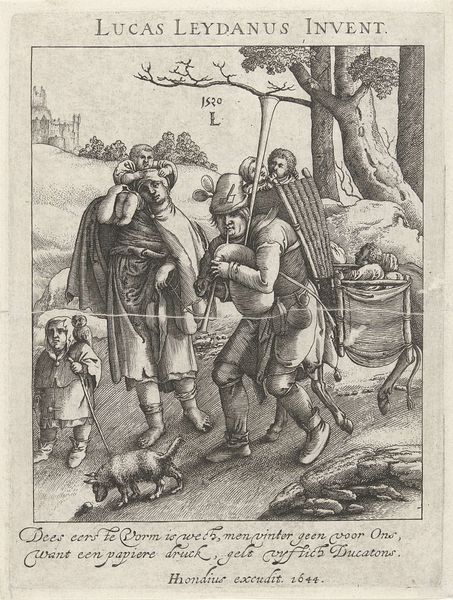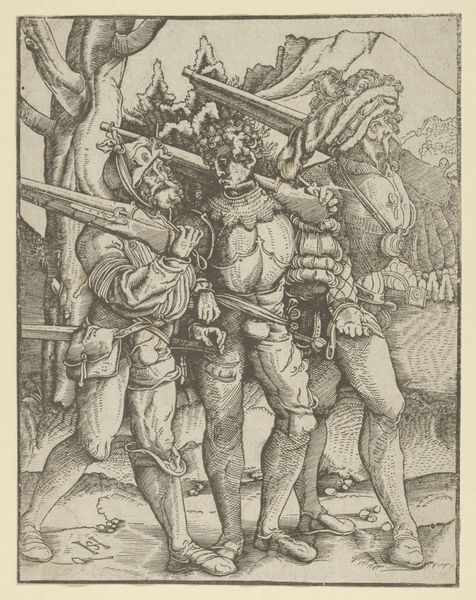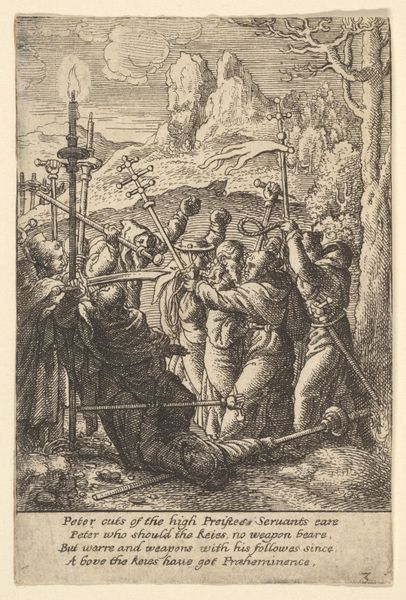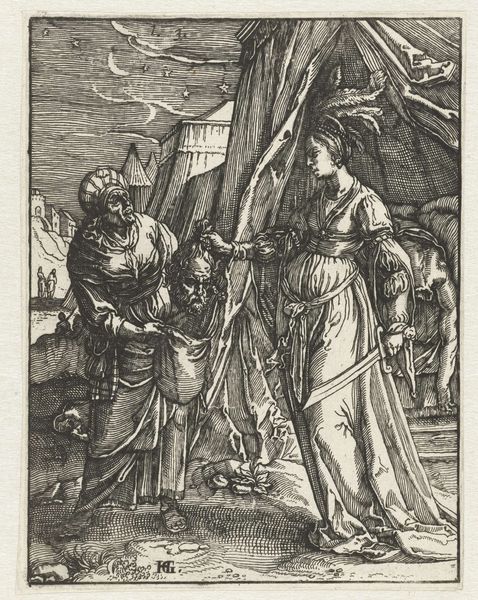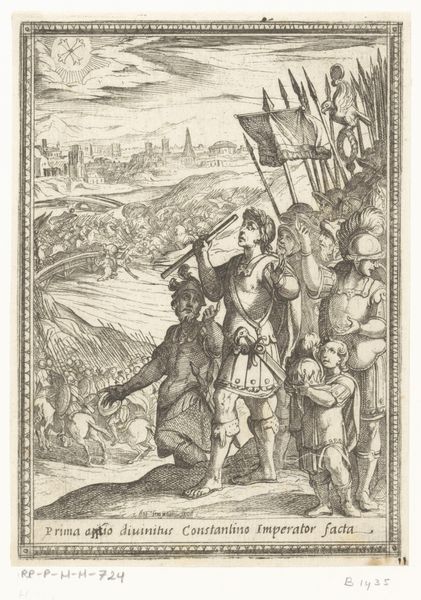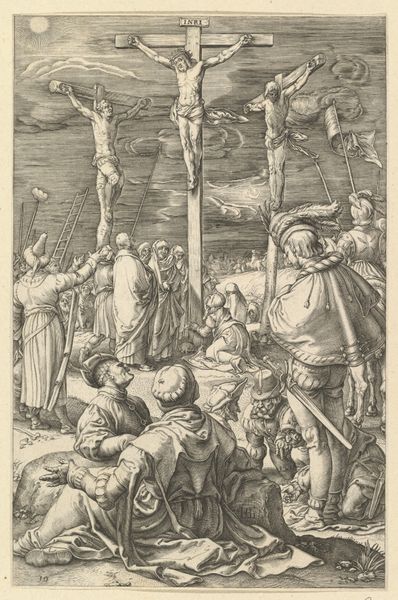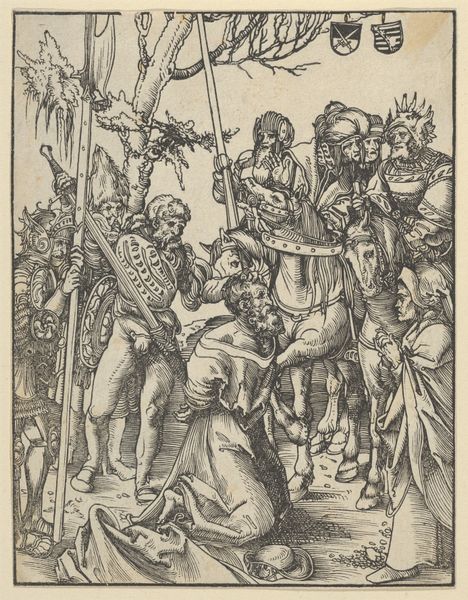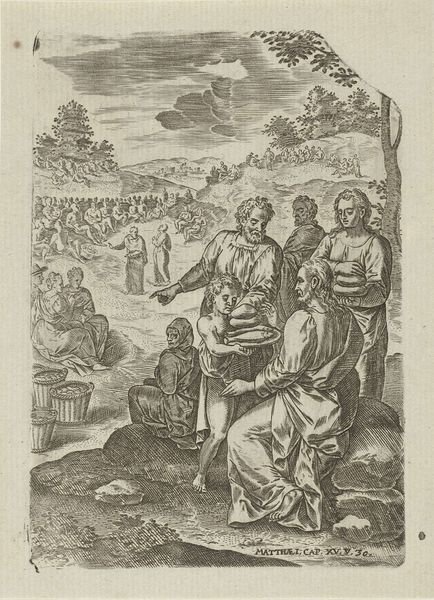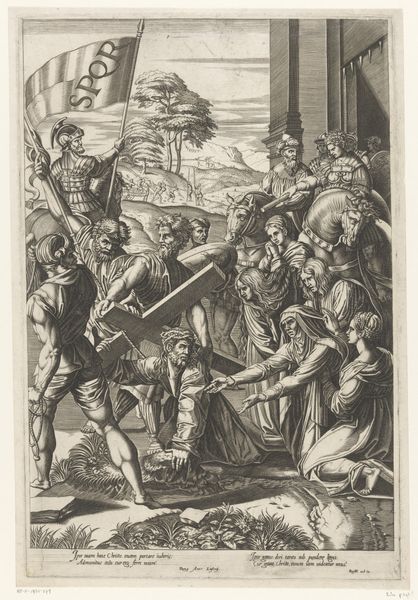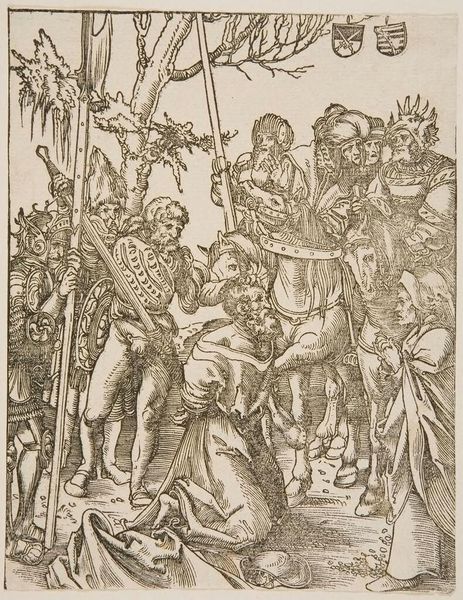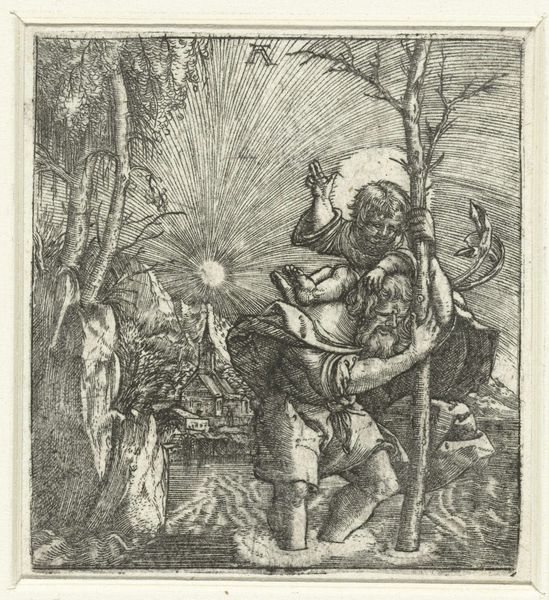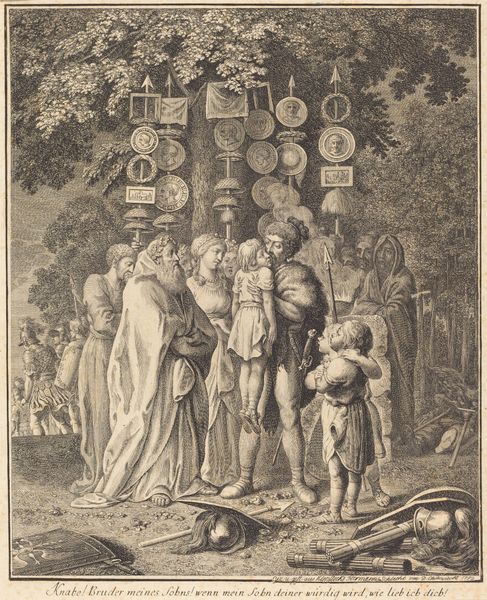
print, engraving
# print
#
pen sketch
#
pencil sketch
#
figuration
#
history-painting
#
italian-renaissance
#
engraving
Dimensions: height 301 mm, width 258 mm
Copyright: Rijks Museum: Open Domain
Curator: So much darkness. Like a dense fog hanging over a really bad day. Editor: I'm happy to introduce you to a print held here at the Rijksmuseum called "The Descent from the Cross". Created sometime between 1553 and 1616, by an anonymous artist during the Italian Renaissance. It's rendered using engraving. What feelings arise as you view it? Curator: Aside from the pervasive gloom, it’s really physical. All these muscles straining to hold a dead weight… you feel the tension. But something feels staged at the same time. Does it strike you that way? Editor: That might be because these scenes were highly formalized by that time, not necessarily a candid capture. The placement of the figures isn't arbitrary, it's all carefully orchestrated to maximize the emotional and symbolic impact. It depicts the moment Christ's body is being taken down from the cross. In iconography, this act isn’t simply about death, but the transition to resurrection and eternal life. Curator: The ladder looks like a bridge in this image. Editor: You're right to recognize that vertical axis—from earthly suffering to heavenly hope. The figures, in their grief, enact a pivotal ritual. Consider the detail in those garments. Look at the rope around the feet of the left most character: Those intricate folds are not just for show, they signify dignity, reverence for the gravity of the moment, and respect for the Divine body they’re handling. Curator: And the landscape, gnarled and looming... Editor: Indeed, even the stark trees and the clouded sky resonate with that sense of profound loss. Yet, if you examine it further, this is actually history-painting. It also symbolizes transition. That dark sky won't remain dark forever. The engraving captures this complexity. Curator: It makes you think, doesn’t it? How a single moment, captured in lines on a page, can hold so much pain and, somehow, the promise of what’s next. Editor: Yes, it is as much about remembrance as it is about hope—a testament to the power of symbols in understanding faith and human emotion.
Comments
No comments
Be the first to comment and join the conversation on the ultimate creative platform.
